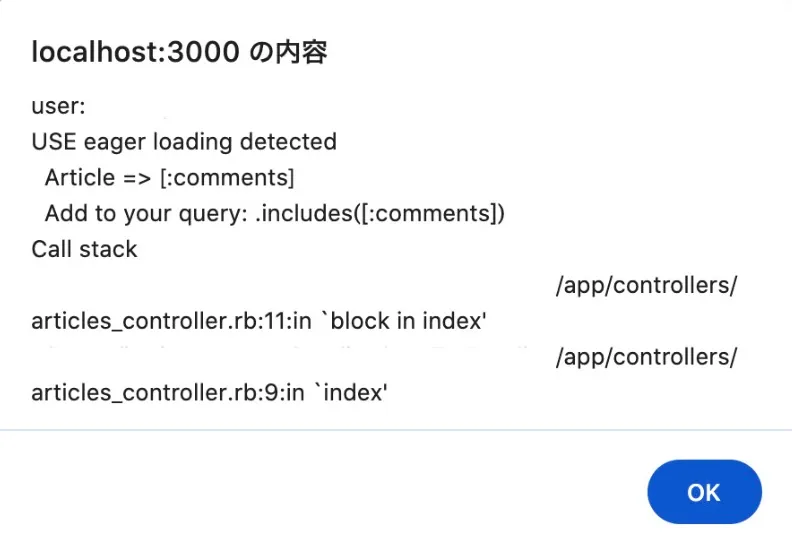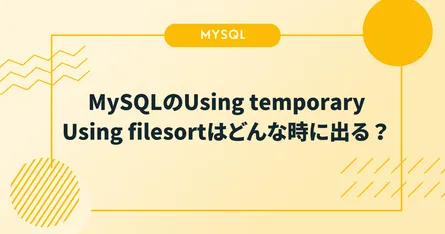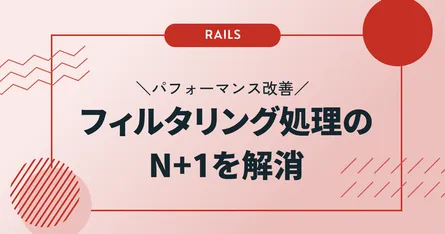bulletの仕組み 〜ソースコードリーディング〜

bulletとは
https://github.com/flyerhzm/bullet
The Bullet gem is designed to help you increase your application’s performance by reducing the number of queries it makes. It will watch your queries while you develop your application and notify you when you should add eager loading (N+1 queries), when you’re using eager loading that isn’t necessary and when you should use counter cache.
Bullet は、アプリケーションの開発中にクエリを監視しいつイーガーローディングを追加すべきか、いつ不要なイーガーローディングを使用しているか、いつカウンターキャッシュを使用すべきかを通知してくれる gem です。 つまり、パフォーマンスの改善点について教えてくれるライブラリです
機能について
N+1が発生しているページを開くと、以下のようなポップアップ警告を表示してくれます

N+1が発生しているページを開くと、ページの左下部に警告の詳細を表示してくれます

表示してくれる警告は以下の3種類があります
# N+1クエリ通知パターン
USE eager loading detected:
Article => [:comments]·
Add to your query: .includes([:comments])
# 未使用のイーガーローディング通知パターン
AVOID eager loading detected
Article => [:comments]·
Remove from your query: .includes([:comments])
# カウンターキャッシュ通知パターン
Need Counter Cache
Article => [:comments]
設定方法について
gemをインストールした後に、config/environments/development.rb に以下のコードを追加することで通知システムを有効化できます
config.after_initialize do
Bullet.enable = true
Bullet.sentry = true
Bullet.alert = true
Bullet.bullet_logger = true
Bullet.console = true
Bullet.xmpp = { :account => 'bullets_account@jabber.org',
:password => 'bullets_password_for_jabber',
:receiver => 'your_account@jabber.org',
:show_online_status => true }
Bullet.rails_logger = true
Bullet.honeybadger = true
Bullet.bugsnag = true
Bullet.appsignal = true
Bullet.airbrake = true
Bullet.rollbar = true
Bullet.add_footer = true
Bullet.skip_html_injection = false
Bullet.stacktrace_includes = [ 'your_gem', 'your_middleware' ]
Bullet.stacktrace_excludes = [ 'their_gem', 'their_middleware', ['my_file.rb', 'my_method'], ['my_file.rb', 16..20] ]
Bullet.slack = { webhook_url: 'http://some.slack.url', channel: '#default', username: 'notifier' }
end
それぞれ以下のような設定になっています(※主要なものだけ抜粋)
Bullet.enable: Bullet gemを有効化するBullet.alert: ブラウザにJavaScriptのアラートをポップアップするBullet.bullet_logger: Bulletのログファイル(Rails.root/log/bullet.log)にログを記録するBullet.console: ブラウザのconsole.logに警告ログを出力するBullet.rails_logger: Railsのログファイルに直接警告を追加するBullet.sentry: sentryに通知を追加するBullet.add_footer: ページの左下に詳細を追加するBullet.slack: slackに通知を追加するBullet.raise: エラーを発生させる。最適化されたクエリでない限り仕様を失敗させるのに便利Bullet.always_append_html_body: notificationが存在しない場合でも、常にhtmlボディを追加する(SPAで、最初のページロード時に通知がない場合に便利)
今回は以下のような設定で Bullet のコードを見ていきます
config.after_initialize do
Bullet.enable = true
Bullet.alert = false
Bullet.bullet_logger = true
Bullet.console = true
Bullet.rails_logger = true
Bullet.add_footer = true
end
どのように実現しているのか?
ここからはどのように機能を実現しているのかソースコードを見ていきます
概要
処理の概要は以下のようになっています
- Rack application に Bullet::Rack middleware を追加する
- Rack application で使用している ORM(今回の場合は ActiveRecord 7.1系)のメソッドをオーバーライドすることで、 ORM の機能に Bullet の処理をフックする
- オーバーライドしたメソッドで N+1 クエリを集計して、その結果を Bullet::Rack middleware でレスポンスに追加する
今回は以下のコードをベースに bullet の処理を見ていきます
# ruby 3.1.4
# rails 7.1.0
# Article は 2 件でそれぞれの Article に 3 件のコメントが紐づいている
Article.all.each do |article|
article.comments.to_a
end
# class Article < ApplicationRecord
# has_many :comments
# end
#
# class Comment < ApplicationRecord
# belongs_to :article
# end
まずプロジェクト内で bullet gem の lib ディレクトリ配下の bullet.rb が読み込まれます。詳細については Bundler.require(*Rails.groups) などで調べると出てくるので割愛します。
その際、bullet.rb の処理で Rails::Railtie クラスが存在している場合は Bullet::BulletRailtie クラスが定義され、initializer で Bullet::Rack middleware が Rack application の middleware として追加されます
module Bullet
if defined?(Rails::Railtie)
class BulletRailtie < Rails::Railtie
initializer 'bullet.configure_rails_initialization' do |app|
if defined?(ActionDispatch::ContentSecurityPolicy::Middleware) && Rails.application.config.content_security_policy
app.middleware.insert_before ActionDispatch::ContentSecurityPolicy::Middleware, Bullet::Rack
else
app.middleware.use Bullet::Rack
end
end
end
end
end
ORM のオーバーライド
次に ORM のオーバーライドについて見ていきます
lib/bullet.rb の読み込み時に ActiveRecord クラスが定義されている場合、active_record? の戻り値が ‘constant’ になり、ActiveRecord のバージョンに合わせたファイルが autoload されます。今回は Rails7.1 を使っているので bullet/active_record71.rb がロードされます
module Bullet
autoload :ActiveRecord, "bullet/#{active_record_version}" if active_record?
end
# /lib/bullet/dependency.rb
module Bullet
module Dependency
def active_record?
@active_record ||= defined?(::ActiveRecord)
end
end
end
Rack application の development.rb で書いた Bullet.enable = true の処理を経て、先ほど autoload した Bullet::ActiveRecord モジュールの enable メソッドが呼ばれます
module Bullet
def enable=(enable)
@enable = @n_plus_one_query_enable = @unused_eager_loading_enable = @counter_cache_enable = enable
if enable?
reset_safelist
unless orm_patches_applied
self.orm_patches_applied = true
Bullet::Mongoid.enable if mongoid?
Bullet::ActiveRecord.enable if active_record?
end
end
end
def enable?
!!@enable
end
end
Bullet::ActiveRecord モジュールの enable メソッドを見てみると ActiveRecord::Base や ActiveRecord::Relation に対して prepend メソッドでパッチを当てています(find_by_sql のみ extend で拡張している)
module Bullet
module ActiveRecord
def self.enable
require 'active_record'
::ActiveRecord::Base.extend(
Module.new do
def find_by_sql(sql, binds = [], preparable: nil, &block)
...
end
end
)
::ActiveRecord::Relation.prepend(
Module.new do
def records
...
end
end
)
::ActiveRecord::Associations::CollectionAssociation.prepend(
Module.new do
def load_target
...
end
end
)
...
end
end
end
prepend メソッドで ORM のメソッドに対してオーバーライドを行い、Bullet の処理を噛ませた上で super メソッドの処理を行うことで N+1 関連の集計を実現しています
Rack middleware
ここからは 先ほど middleware として追加した Bullet::Rack を見ていきます
その前に少しだけ Rack middleware について触れます。Rack middleware は渡された env の情報を加工して、次の middleware または application に処理の受け渡しを行う役割を担っています
Rack middleware は以下の条件を満たしている必要があります
- class として実装されていること
- initialize で app を受け取ること
- call メソッドを実装して、レスポンスとして status, headers, body を返すこと
class SampleRackMiddleware
def initialize(app)
@app = app
end
def call(env)
status, headers, body = @app.call(env)
sample_body = body + ["Add Sample Rack Middleware!\n"]
[status, headers, sample_body]
end
end
use SampleRackMiddleware
上記のように Rack middleware を class として実装し、useメソッドを呼び出すことで Rack application に middleware を追加できます
Bullet::Rack
上記を踏まえた上で Bullet::Rack を見ていきます
module Bullet
class Rack
def initialize(app)
@app = app
end
def call(env)
return @app.call(env) unless Bullet.enable?
Bullet.start_request
status, headers, response = @app.call(env)
response_body = nil
if Bullet.notification? || Bullet.always_append_html_body
if Bullet.inject_into_page? && !file?(headers) && !sse?(headers) && !empty?(response) && status == 200
if html_request?(headers, response)
response_body = response_body(response)
with_security_policy_nonce(headers) do |nonce|
response_body = append_to_html_body(response_body, footer_note) if Bullet.add_footer
response_body = append_to_html_body(response_body, Bullet.gather_inline_notifications)
if Bullet.add_footer && !Bullet.skip_http_headers
response_body = append_to_html_body(response_body, xhr_script(nonce))
end
end
headers['Content-Length'] = response_body.bytesize.to_s
elsif !Bullet.skip_http_headers
set_header(headers, 'X-bullet-footer-text', Bullet.footer_info.uniq) if Bullet.add_footer
set_header(headers, 'X-bullet-console-text', Bullet.text_notifications) if Bullet.console_enabled?
end
end
Bullet.perform_out_of_channel_notifications(env)
end
[status, headers, response_body ? [response_body] : response]
ensure
Bullet.end_request
end
end
end
まず、大まかな流れを確認すると以下のようになります
Bullet.enable?が false の場合は、@app.callを行い次の middleware または application に処理を受け渡し、戻り値をそのままリターンするBullet.enable?が true の場合は、Bullet.start_requestした上で@app.callを行い次の middleware または application に処理を受け渡す- application の処理で N+1 の集計が行われる
Bullet.notification?が true の場合は、@app.callの戻り値の body に bullet の通知をインサートしてリターンする- 最後に
Bullet.end_requestを呼び出す
次項からは上記の処理を部分的に拾いながら詳細に見ていきます
Bullet.start_request / end_request
まずは Bullet クラスの start_request メソッド と end_request メソッドについてです
Bullet クラスの start_request メソッドは、 Thread を使ってグローバル変数として利用したい情報をスレッドローカル変数として格納しています。ここで定義したスレッドローカル変数は、 Bullet の通知や Association の情報を保持する重要な役割を担っています
module Bullet
def start_request
Thread.current[:bullet_start] = true
Thread.current[:bullet_notification_collector] = Bullet::NotificationCollector.new
Thread.current[:bullet_object_associations] = Bullet::Registry::Base.new
Thread.current[:bullet_call_object_associations] = Bullet::Registry::Base.new
Thread.current[:bullet_possible_objects] = Bullet::Registry::Object.new
Thread.current[:bullet_impossible_objects] = Bullet::Registry::Object.new
Thread.current[:bullet_inversed_objects] = Bullet::Registry::Base.new
Thread.current[:bullet_eager_loadings] = Bullet::Registry::Association.new
Thread.current[:bullet_call_stacks] = Bullet::Registry::CallStack.new
Thread.current[:bullet_counter_possible_objects] ||= Bullet::Registry::Object.new
Thread.current[:bullet_counter_impossible_objects] ||= Bullet::Registry::Object.new
end
end
一通りの処理が終わったら Bullet クラスの end_request メソッドを呼び出して、Thread で定義した値を nil でリセットしています。Puma のような一度作成したスレッドを再利用するようなアプリケーションサーバーを使用している場合、スレッドローカル変数が再利用前提のスレッドに紐づいてしまうため、明示的にリセットしないと過去のリクエストで定義した変数が別のリクエストで参照できてしまいます。このような事態を回避するために end_request メソッドでリセットを行なっています
module Bullet
def end_request
Thread.current[:bullet_start] = nil
Thread.current[:bullet_notification_collector] = nil
Thread.current[:bullet_object_associations] = nil
Thread.current[:bullet_call_object_associations] = nil
Thread.current[:bullet_possible_objects] = nil
Thread.current[:bullet_impossible_objects] = nil
Thread.current[:bullet_inversed_objects] = nil
Thread.current[:bullet_eager_loadings] = nil
Thread.current[:bullet_counter_possible_objects] = nil
Thread.current[:bullet_counter_impossible_objects] = nil
end
end
通知の生成
次に Bullet 通知の生成部分について見ていきます
Article.all.each do |article| # N+1 発生パターン
article.comments.to_a
end
今回は Article.all.each でループしてそれぞれの Article のコメントを取得するパターンについて見ていきます。これは皆さんもお分かりの通り N+1 が発生するパターンです。このパターンでは Bullet::ActiveRecord モジュールでオーバーライドしたメソッドのうち records → load_target → find_by_sql → inversed_from メソッドを通ります。records メソッドでは Bullet::Detector::NPlusOneQuery クラスの add メソッドによって以下のように bullet_possible_objects スレッドローカル変数に Article の情報が代入されます
Thread.current[:bullet_possible_objects]
=> #<Bullet::Registry::Object:0x000000010e020260 @registry={"Article"=>#<Set: {"Article:1", "Article:2"}>}>
inversed_from メソッドでは Bullet::Detector::NPlusOneQuery クラスの add_inversed_object メソッドによって以下のように bullet_inversed_objects スレッドローカル変数に belongs_to 関連の情報が代入されます
Thread.current[:bullet_inversed_objects]
=> #<Bullet::Registry::Base:0x000000010e36d0a8
@registry={"Comment:1"=>#<Set: {:article}>, "Comment:2"=>#<Set: {:article}>, "Comment:3"=>#<Set: {:article}>}>
find_by_sql メソッドでは Bullet::Detector::NPlusOneQuery クラスの add メソッドによって以下のように bullet_possible_objects スレッドローカル変数に Association 先の Comment の情報が追加されます
Thread.current[:bullet_possible_objects]
=> #<Bullet::Registry::Object:0x000000010e36d1e8
@registry={"Article"=>#<Set: {"Article:1", "Article:2"}>, "Comment"=>#<Set: {"Comment:1", "Comment:2", "Comment:3"}>}>
load_target メソッドでは、まず Bullet::Detector::NPlusOneQuery クラスの call_association メソッドによって以下のように bullet_call_object_associations スレッドローカル変数に Association の情報が代入されます
Thread.current[:bullet_call_object_associations]
=> #<Bullet::Registry::Base:0x000000010e346660 @registry={"Article:1"=>#<Set: {:comments}>}>
その後、以下の conditions_met? メソッドが true の場合に create_notification メソッドで通知が生成される仕組みになっています
def conditions_met?(object, associations)
possible?(object) && !impossible?(object) && !association?(object, associations)
end
# object
# => Articleインスタンス(id: 1)
# asssociations
# => :comments
create_notification メソッドでは bullet_notification_collector スレッドローカル変数に通知で使用する情報が代入されます
Thread.current[:bullet_notification_collector]
=> #<Bullet::NotificationCollector:0x0000000106f08be0
@collection=
#<Set:
{#<Bullet::Notification::NPlusOneQuery:0x00000001064cb740
@associations=[:comments],
@base_class="Article",
@callers=
["/Users/xxxxxxx/xxxxxxx/xxxxxxx/app/controllers/articles_controller.rb:11:in `block in index'",
"/Users/xxxxxxx/xxxxxxx/xxxxxxx/app/controllers/articles_controller.rb:9:in `index'"],
@path=nil>}>>
次項の「通知の表示」では、この bullet_notification_collector スレッドローカル変数に代入された情報を元に通知を表示していきます
通知の表示
ここからは Bullet 通知の表示部分について見ていきます。上述の通りで通知は Bullet::Rack middleware を通して、application の HTML body に追加されます。今回は add_footer (サイトの左下に表示される赤いやつ) に絞って処理を見ていきます
module Bullet
class Rack
def call(env)
Bullet.start_request
status, headers, response = @app.call(env)
response_body = nil
if Bullet.notification? || Bullet.always_append_html_body
if Bullet.inject_into_page? && !file?(headers) && !sse?(headers) && !empty?(response) && status == 200
if html_request?(headers, response)
★ response_body = response_body(response)
with_security_policy_nonce(headers) do |nonce|
★ response_body = append_to_html_body(response_body, footer_note) if Bullet.add_footer
...
end
...
end
end
end
★ [status, headers, response_body ? [response_body] : response]
ensure
Bullet.end_request
end
end
end
Bullet::Rack を見てみると @app.call の戻り値の body (response 変数) を response_body という変数に置き換えていることがわかります。そのため response → response_body で Bullet の通知用 HTML が追加されているのではないかと予測できます。そのため response_body に何が代入されているのかを見ていきます
まず response_body = response_body(response) は response 変数の body (HTML の文字列) を代入しています。この時点では Bullet の通知は追加されていません
次に response_body = append_to_html_body(response_body, footer_note) を見ていきます。第二引数に渡された footer_note は以下のようなメソッドになっており、通知用の HTML で構成されています
def footer_note
"<details #{details_attributes}><summary #{summary_attributes}>Bullet Warnings</summary><div #{footer_content_attributes}>#{Bullet.footer_info.uniq.join('<br>')}#{footer_console_message}</div></details>"
end
この HTML の #{Bullet.footer_info.uniq.join('<br>')} という部分が div タグの内容になっているため、この部分が通知の本体であると予測できます。Bullet.footer_info を見てみると notification_collector.collection を each で info 配列に代入しています
def footer_info
info = []
notification_collector.collection.each { |notification| info << notification.short_notice }
info
end
notification_collector は何か確認すると、先ほど通知の情報を代入した bullet_notification_collector スレッドローカル変数であることがわかります
def notification_collector
Thread.current[:bullet_notification_collector]
end
info に代入している notification.short_notice を確認すると以下のようなメソッドになっており、デバッグしてみると以下のような見慣れた文字列が生成されていることがわかります
def short_notice
parts = []
parts << whoami.presence unless Bullet.skip_user_in_notification
parts << url
parts << title
parts << body
parts.compact.join(' ')
end
=> "user: horinoyuutarou USE eager loading detected Article => [:comments]\n Add to your query: .includes([:comments])"
ここで生成した通知を append_to_html_body メソッドで response_body にインサートしていることがわかります
def append_to_html_body(response_body, content)
body = response_body.dup
content = content.html_safe if content.respond_to?(:html_safe)
if body.include?('</body>')
position = body.rindex('</body>')
body.insert(position, content)
else
body << content
end
end
この response_body を Rack レスポンスとしてリターンすることで Bullet 通知の表示を実現しています
まとめ
- Rack application に Bullet::Rack middleware を追加する
- Rack application で使用している ORM(JobQの場合は ActiveRecord 7.1系)のメソッドをオーバーライドすることで、 ORM の機能に Bullet の処理をフックする
~ リクエスト ~
Bullet.enable?が false の場合は、@app.callを行い次の middleware または application に処理を受け渡し、戻り値をそのままリターンするBullet.enable?が true の場合は、Bullet.start_requestした上で@app.callを行い次の middleware または application に処理を受け渡す- application の処理で N+1 の集計が行われ、bullet_notification_collector スレッドローカル変数に通知情報が代入される
Bullet.notification?が true の場合は、@app.callの戻り値の body に bullet の通知をインサートしてリターンする- 最後に
Bullet.end_requestを呼び出してスレッドローカル変数の情報をリセットする




